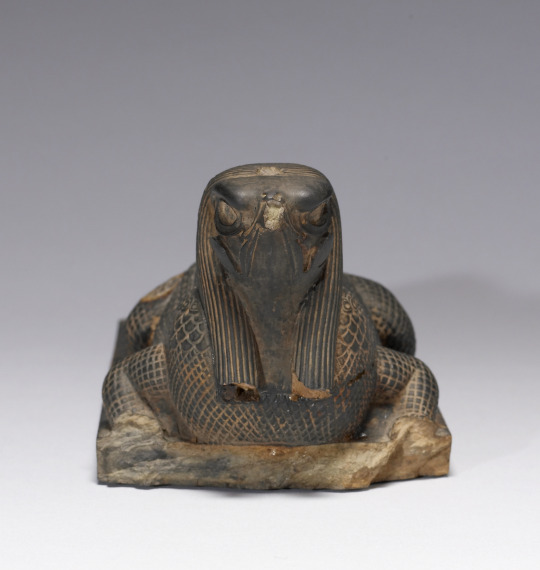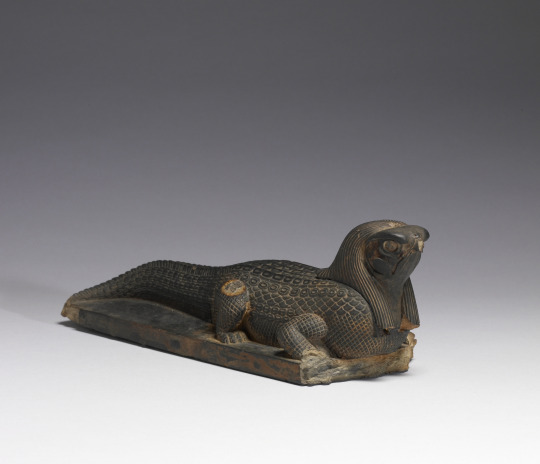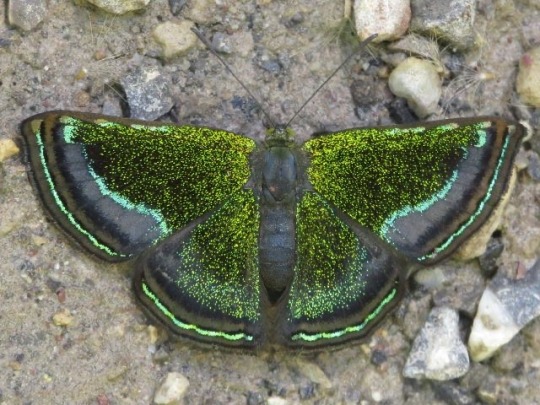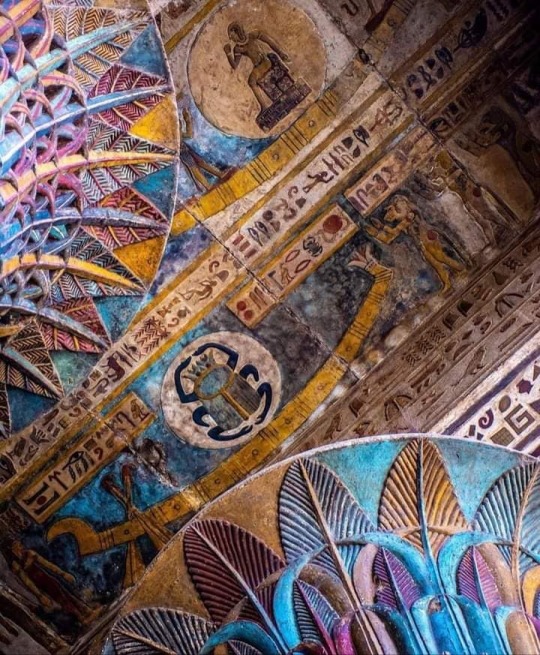Text

Horus spear Set who is in the form of a hippopotamus as Goddess Isis looks on
284 notes
·
View notes
Text



~ Statue of a Crocodile with the Head of a Falcon.
Culture: Egyptian
Date: ca. 380-250 B.C.
Period: Late Period-early Ptolemaic Period; 30th Dynasty
Medium: Steatite
3K notes
·
View notes
Text


~ Finger stall.
Period: New Kingdom, Dynasty 18; reign of Thutmose III
Date: ca. 1479–1425 B.C.
Place of origin: Egypt, Upper Egypt, Thebes, Wadi Gabbanat el-Qurud, Wadi D, Tomb of the Three Foreign Wives of Thutmose III
Medium: Gold
484 notes
·
View notes
Text

An Egyptian mummy displayed in Emory University’s Michael C. Carlos Museum in Atlanta.
The mummy is that of a man who lived during the Old Kingdom period of Egypt, in c. 2300 BCE.
96 notes
·
View notes
Text

Gold Knecklace from Giza, Egypt dated between 2450-2350 BCE on display at the Kunsthistorisches Museum in Vienna, Austria
Phototgraphs taken by myself 2022
104 notes
·
View notes
Text

Head of the God Amun Ca. 1336–1327 B.C. New Kingdom, post-Amarna Period. From Upper Egypt, Thebes; From Egypt.
Amun was a major ancient Egyptian deity who appears as a member of the Hermopolitan Ogdoad. Amun was attested from the Old Kingdom together with his wife Amunet. With the 11th Dynasty (c. 21st century BC), Amun rose to the position of patron deity of Thebes by replacing Montu.
After the rebellion of Thebes against the Hyksos and with the rule of Ahmose I (16th century BC), Amun acquired national importance, expressed in his fusion with the Sun god, Ra, as Amun-Ra (alternatively spelled Amon-Ra or Amun-Re).
Amun-Ra retained chief importance in the Egyptian pantheon throughout the New Kingdom (with the exception of the "Atenist heresy" under Akhenaten). Amun-Ra in this period (16th to 11th centuries BC) held the position of transcendental, self-created creator deity "par excellence"; he was the champion of the poor or troubled and central to personal piety. With Osiris, Amun-Ra is the most widely recorded of the Egyptian gods.
As the chief deity of the Egyptian Empire, Amun-Ra also came to be worshipped outside Egypt, according to the testimony of ancient Greek historiographers in Libya and Nubia. As Zeus Ammon and Jupiter Ammon, he came to be identified with Zeus in Greece and Jupiter in Rome.
162 notes
·
View notes
Text
275 notes
·
View notes
Text
170 notes
·
View notes
Text

~ Ibis figurine.
Place of origin: Egypt, Alexandria (?)
Period: Hellenistic Period (Ptolemaic Dynasty)
Date: 305–30 B.C.
Medium: Gold sheet over core; blue enamel
1K notes
·
View notes
Text
4 notes
·
View notes
Text

Caria chrysame psittacus, a type of metalmark butterfly known for its shimmery green markings. Photo credit: Kim Garwood
48K notes
·
View notes
Text
Hibiscuses and Hinduism: How Gardens Cultivate Culture - Scientific American Blog Network
6 notes
·
View notes
Text
Hibiscuses and Hinduism: How Gardens Cultivate Culture - Scientific American Blog Network
0 notes
Photo





Murals from the tomb of Menna, who was Scribe of the Fields of the Lord of the Two Lands, probably during the reign of Thutmose IV, in the 18th dynasty
3K notes
·
View notes
Photo

Plaque of a Woman Giving Birth
This plaque depicts a woman on the birthing-chair, being assisted by two women with Hathor heads and crowns, the Hathor crown consists of two horns with the sun disk between them and tall plumes. The figures of the women are rendered in frontal view, and are nearly three-dimensional. They are carved in sunken-relief, that was characteristic of the Ptolemaic Period. The stone was placed as an ex-voto, most probably by a pious person, at the temple of Hathor in Dendera, to thank the goddess for helping in a confinement.
Hathor was worshiped at her main cult center at Dendera and in other places in Egypt. She was later identified with the Greek goddess Aphrodite. She acted as nurse and was the patroness of pregnant woman in the confinement chamber. In the Tale of the Doomed Prince, seven Hathor nurses were mentioned in the context of protecting the newly born prince.
Ptolemaic Period, ca. 305-30 BC. Carved limestone, from Dendera Temple Complex. Now in the Egyptian Museum, Cairo. JE 40627
539 notes
·
View notes






